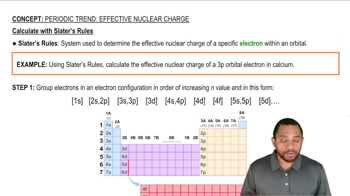Ethane, C2H6, is an alkane with one C─C bond and six C─H bonds (Section 2.9). a. Use enthalpies of formation given in Appendix C to calculate Δ𝐻 for the reaction C2H6(𝑔)→2C(𝑔)+6H(𝑔). b. Use the result from part (a) and the value of 𝐷(C─H) from Table 5.4 to estimate the bond enthalpy 𝐷(C─C). c. How large is the difference between the value calculated for in part (b) and the value given in Table 5.4?
(b) A particular chip snack food is composed of 12% protein, 14% fat, and the rest carbohydrate. What percentage of the calorie content of this food is fat?

Verified Solution
Key Concepts
Caloric Content of Macronutrients

Percentage Composition

Total Caloric Calculation

Use bond enthalpies in Table 5.4 to estimate H for each of the following reactions: (a)
Consider the reaction 2 H2(g) + O2(g) → 2 H2O(l). (a) Use the bond enthalpies in Table 5.4 to estimate H for this reaction, ignoring the fact that water is in the liquid state.
(a) A serving of a particular ready-to-serve chicken noodle soup contains 2.5 g fat, 14 g carbohydrate, and 7 g protein. Estimate the number of Calories in a serving.
The heat of combustion of fructose, C6H12O6, is -2812 kJ/mol. If a fresh golden delicious apple weighing 4.23 oz (120 g) contains 16.0 g of fructose, what caloric content does the fructose contribute to the apple?
The heat of combustion of ethanol, C2H5OH(l), is -1367 kJ/mol. A batch of Sauvignon Blanc wine contains 10.6% ethanol by mass. Assuming the density of the wine to be 1.0 g/mL, what is the caloric content due to the alcohol (ethanol) in a 6-oz glass of wine (177 mL)?
